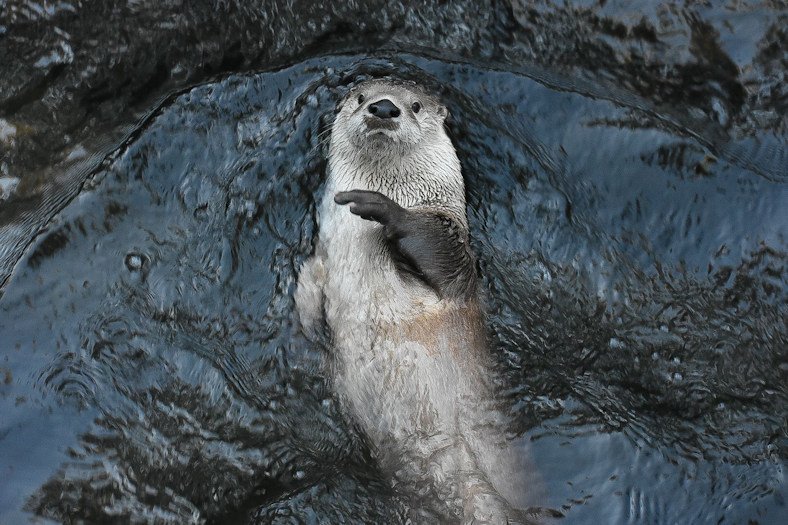High Desert Museum says farewell to Rogue, the river otter

BEND, Ore. (KTVZ) — Rogue, a North American river otter who lived at Bend's High Desert Museum for the past nine years, was humanely euthanized on Tuesday, museum officials announced.
Sadly, his physical condition deteriorated rapidly over the last few weeks after a struggle with osteoarthritis and attempts to give him relief with new medications failed, the museum said Thursday.
"The museum’s professional caretakers and veterinarian made the decision based on Rogue’s prognosis and quality of life," the announcement said. It continues in full below:
“Rogue has been a longtime favorite of museum visitors,” said Museum Executive Director Dana Whitelaw, Ph.D. “In his time at the Museum, Rogue served as an ambassador for his species, educating many thousands of visitors about the story of riparian habitats in the High Desert and delighting them with his playful antics.”
The otter came to the Museum in 2013. While he could not survive in the wild, as he was habituated to humans, he thrived in his habitat.
“Rogue was 12 years old, median life expectancy for an otter in captivity,” Museum Curator of Wildlife Jon Nelson said, noting that otters can live for up to eight or nine years in the wild.
Rogue shared his habitat at the Autzen Otter Exhibit with two other male otters, Brook and Pitch. For nearly a decade, visitors enjoyed watching him swim, play and groom the other otters.
Rogue was a calming presence and role model for his companions, delivering food to the den for an extremely shy Brook after his arrival in 2014, and teaching rambunctious adolescent Pitch to behave like an adult otter after his introduction to the habitat in 2017.
Rogue will be missed by the otters and the wildlife staff who cared for him.
“We’re not actively looking for another river otter at the moment, yet the museum serves as a a refuge for wildlife that can’t survive in the wild,” Whitelaw said. “If another otter needed care and we thought it would thrive in the habitat with the other otters, we would consider it.”
The museum cares for more than 130 animals, from otters to fish. The majority of the animals cannot survive in the wild, either due to injuries or because they are habituated — they became too familiar with humans and possibly never learned how to hunt or avoid predators. At the museum, they serve as ambassadors that educate about High Desert species and landscapes.
ABOUT THE MUSEUM:
THE HIGH DESERT MUSEUM opened in Bend, Oregon in 1982. It brings together wildlife, cultures, art, history and the natural world to convey the wonder of North America’s High Desert. The Museum is a 501(c)3 nonprofit organization accredited by the American Alliance of Museums, is a Smithsonian Affiliate, was the 2019 recipient of the Western Museums Association’s Charles Redd Award for Exhibition Excellence and was a 2021 recipient of the National Medal for Museum and Library Service. To learn more, visit highdesertmuseum.org and follow us on Facebook, Instagram and Twitter.



